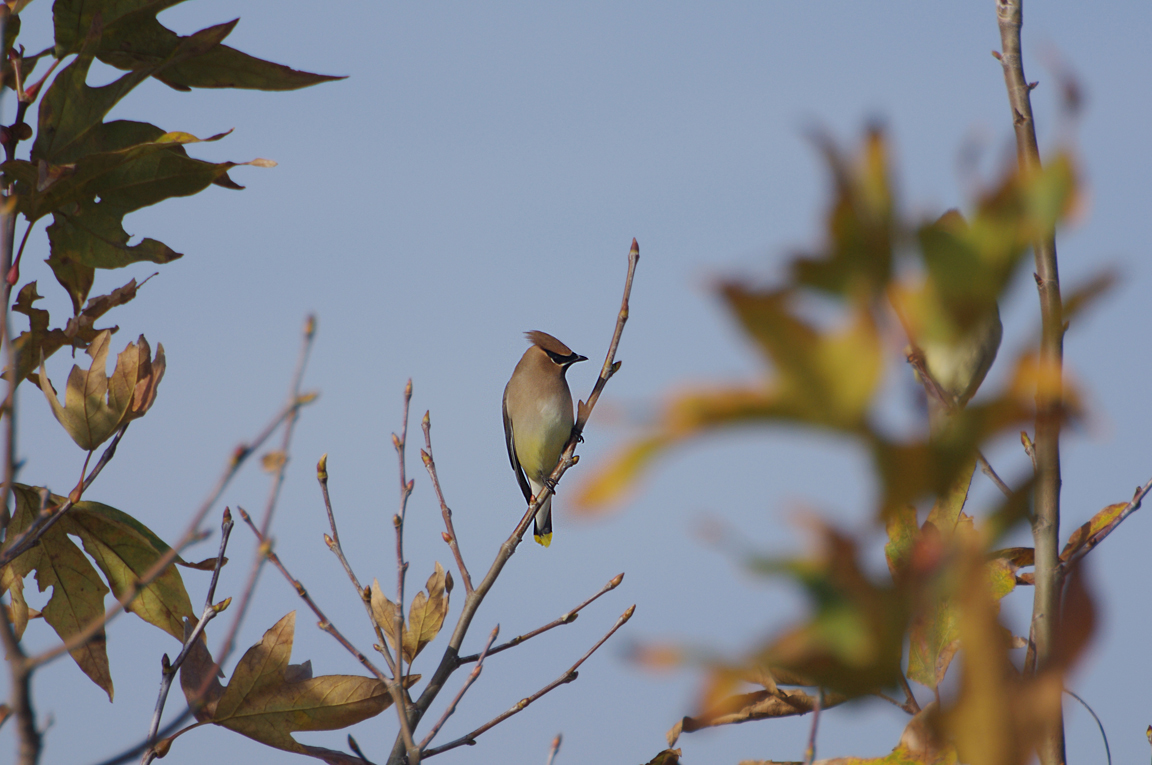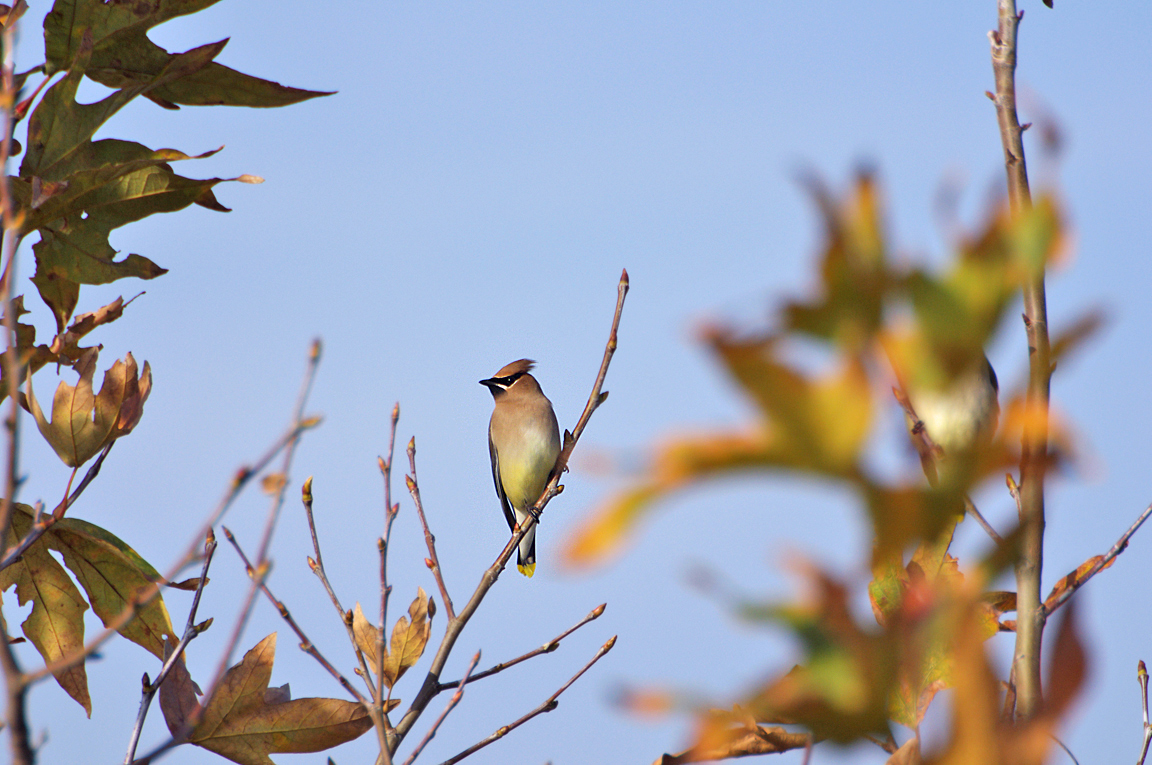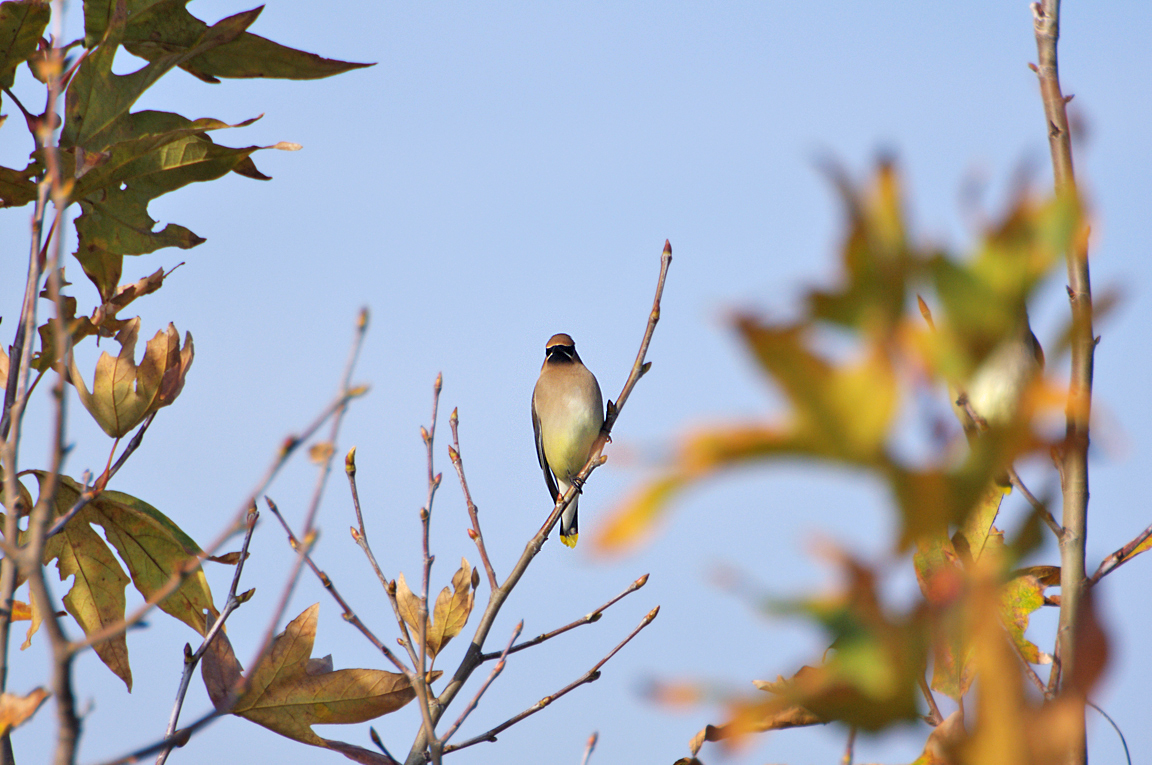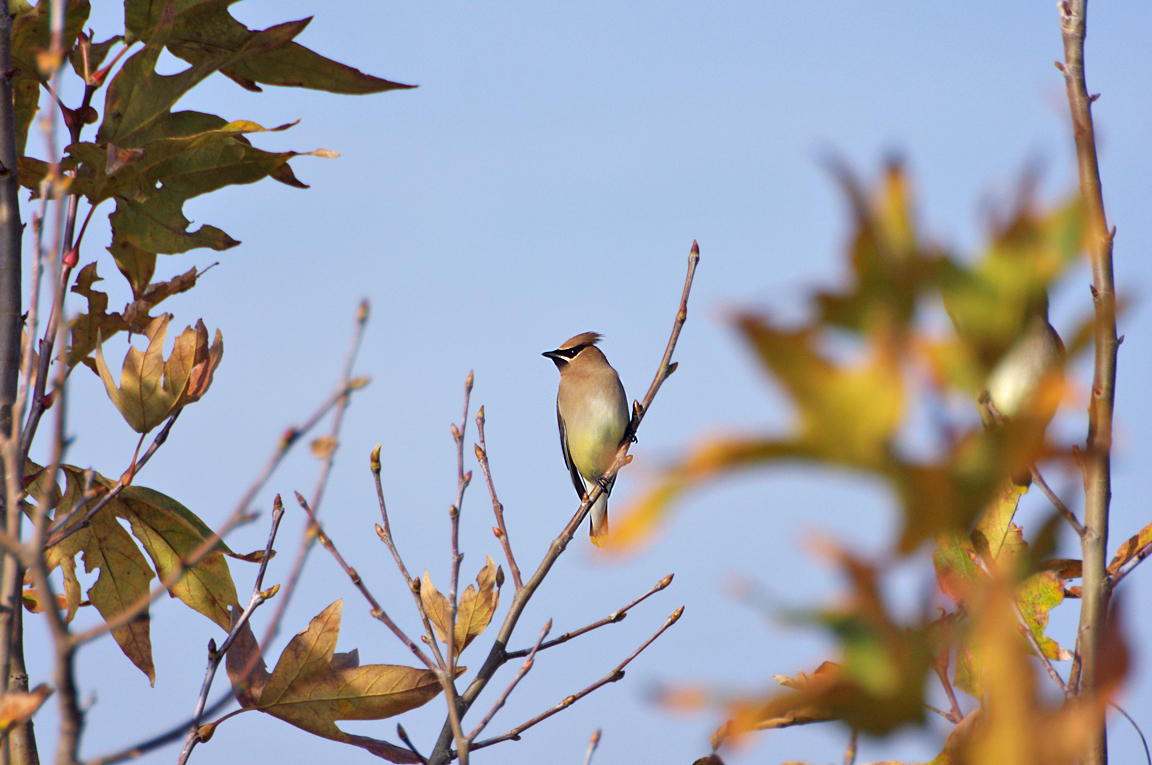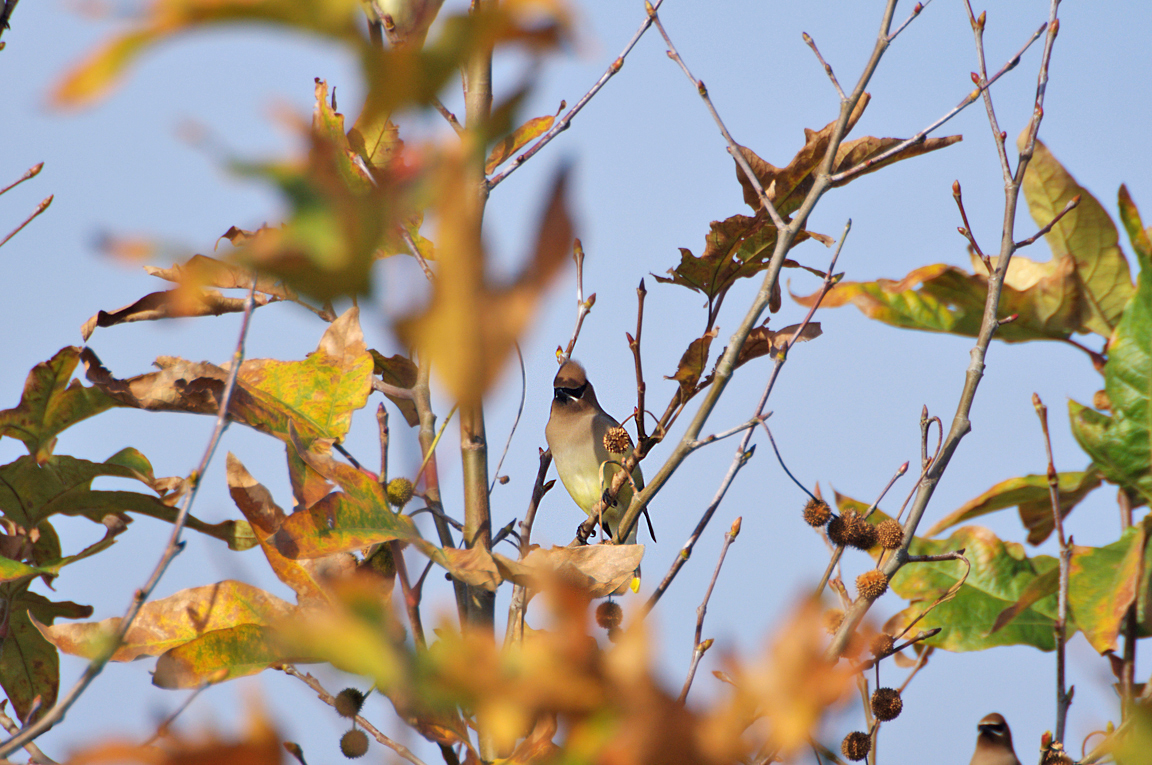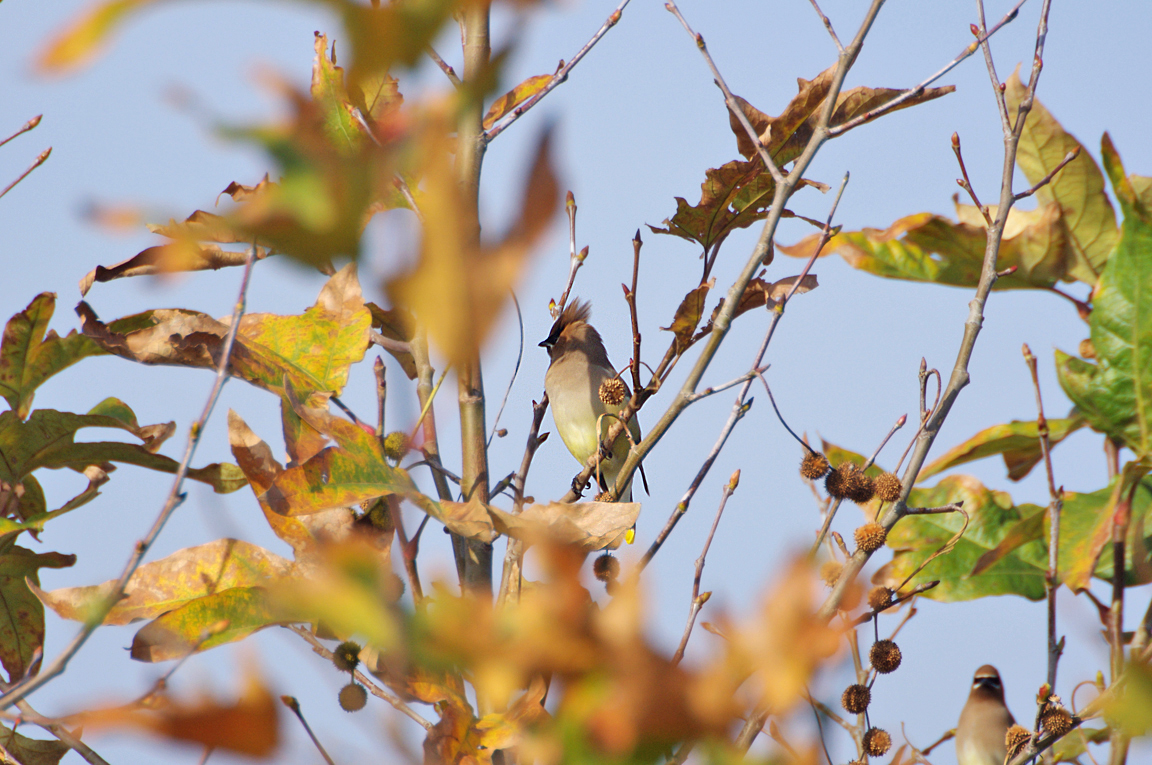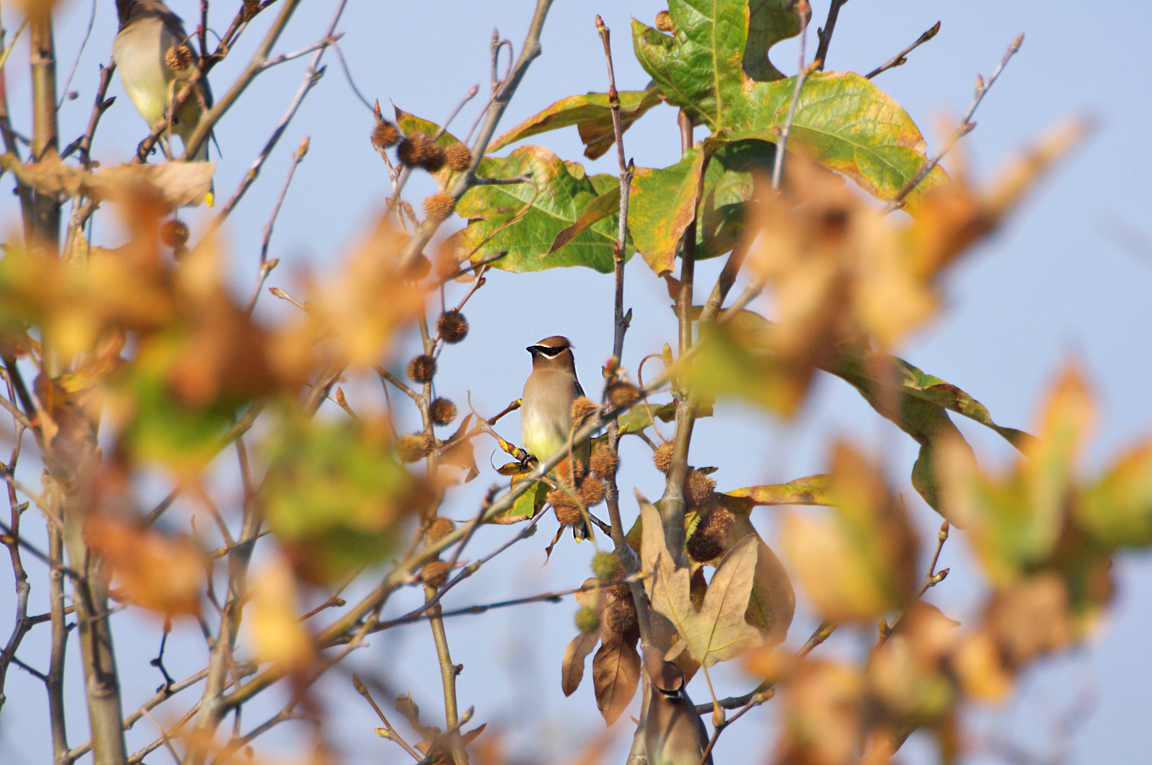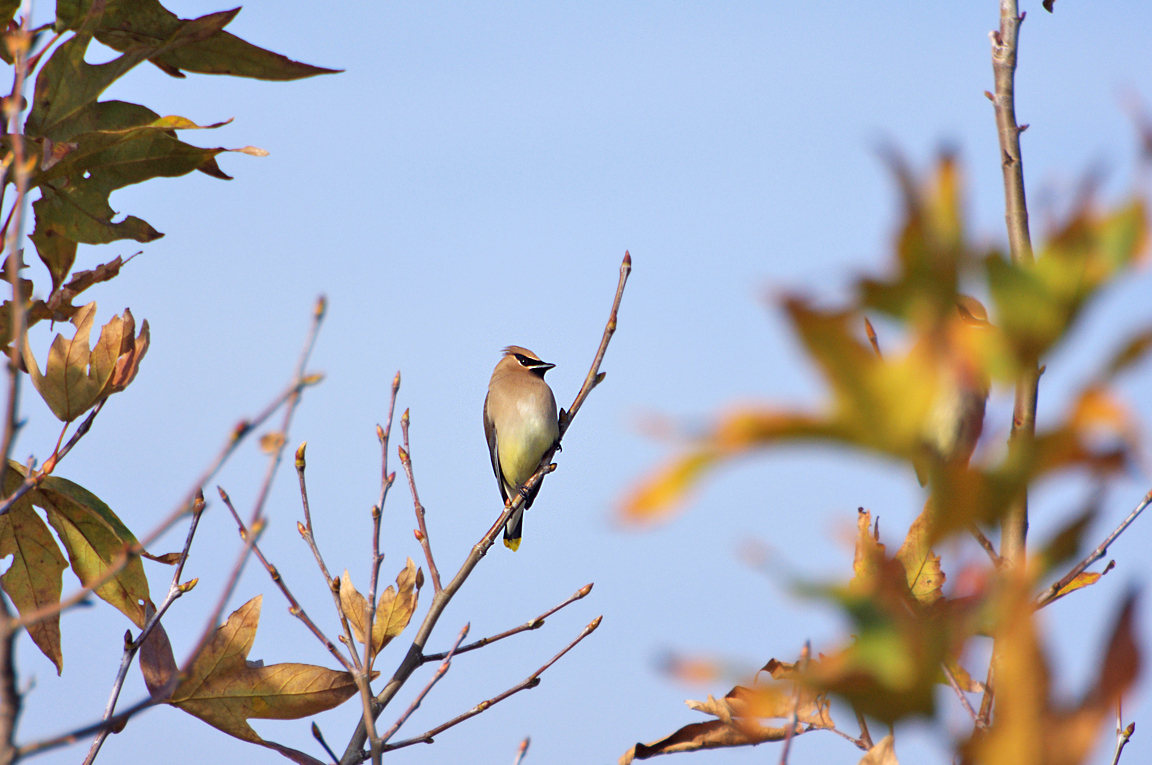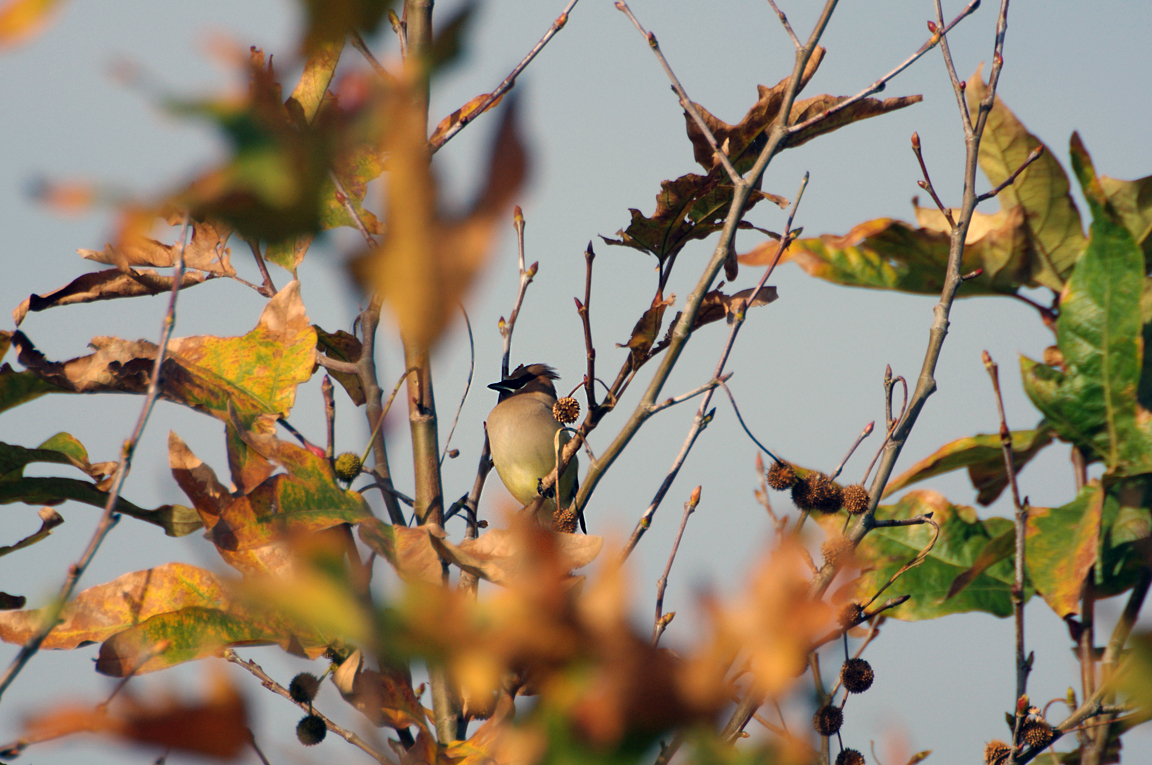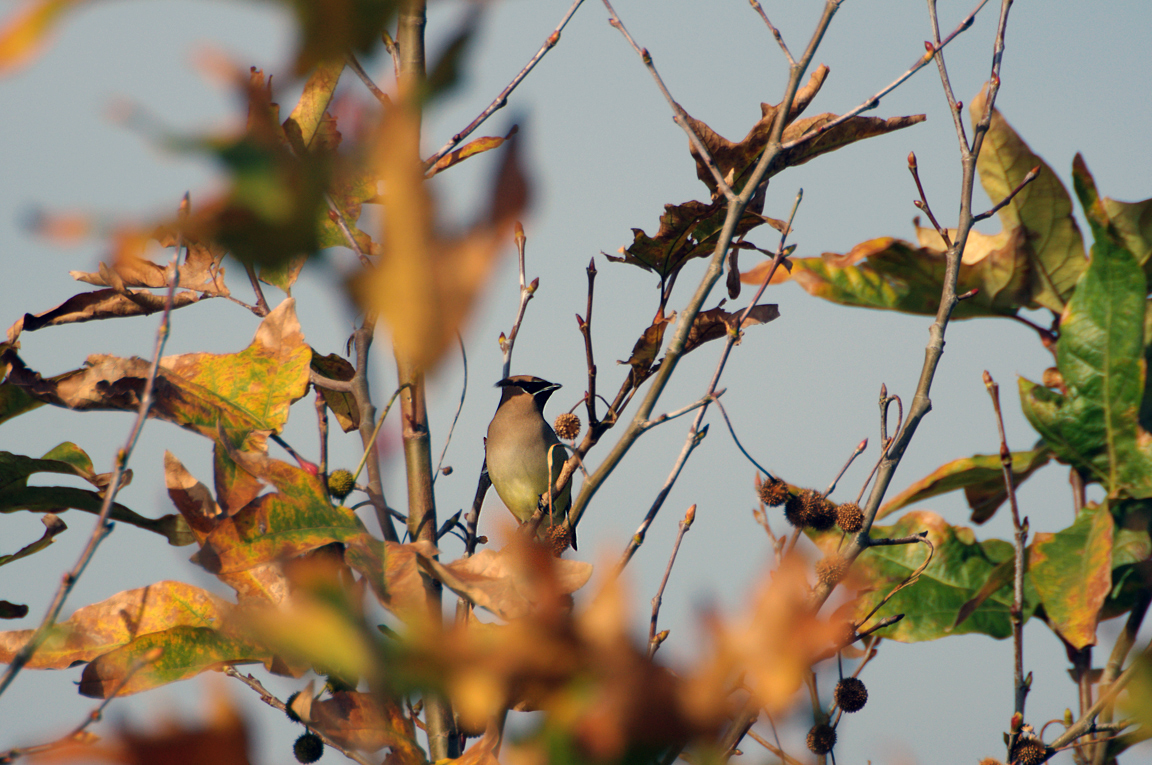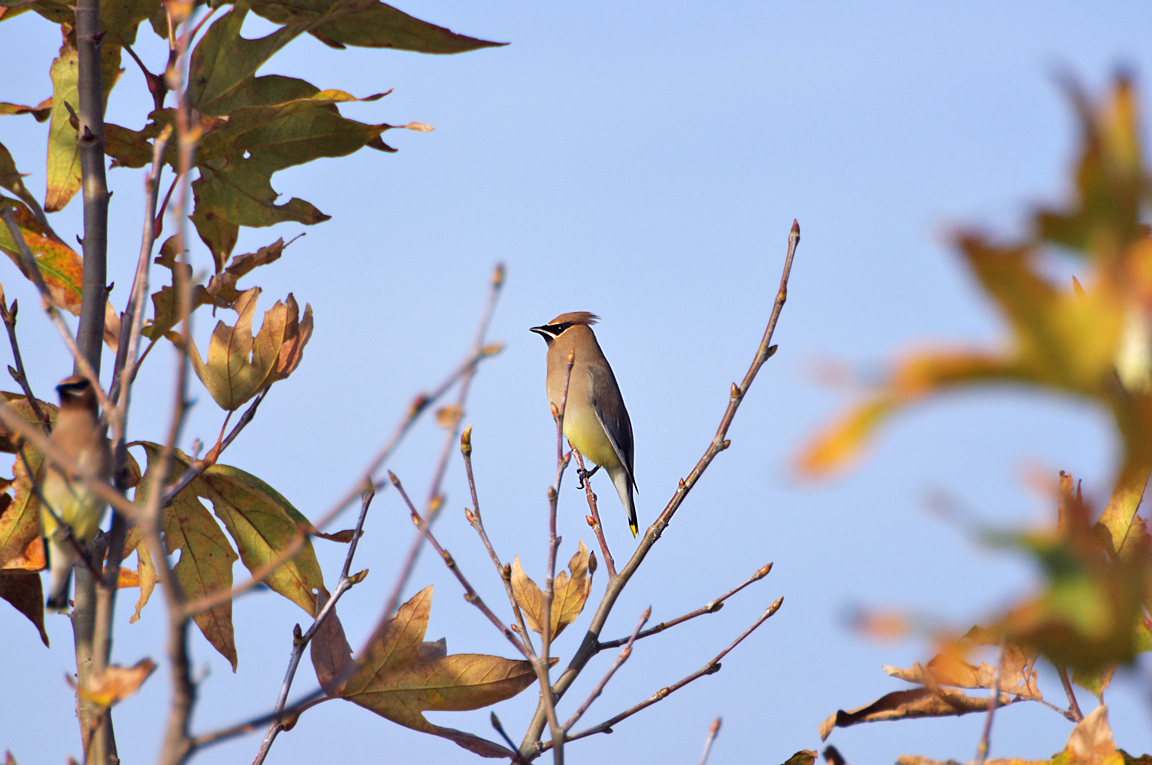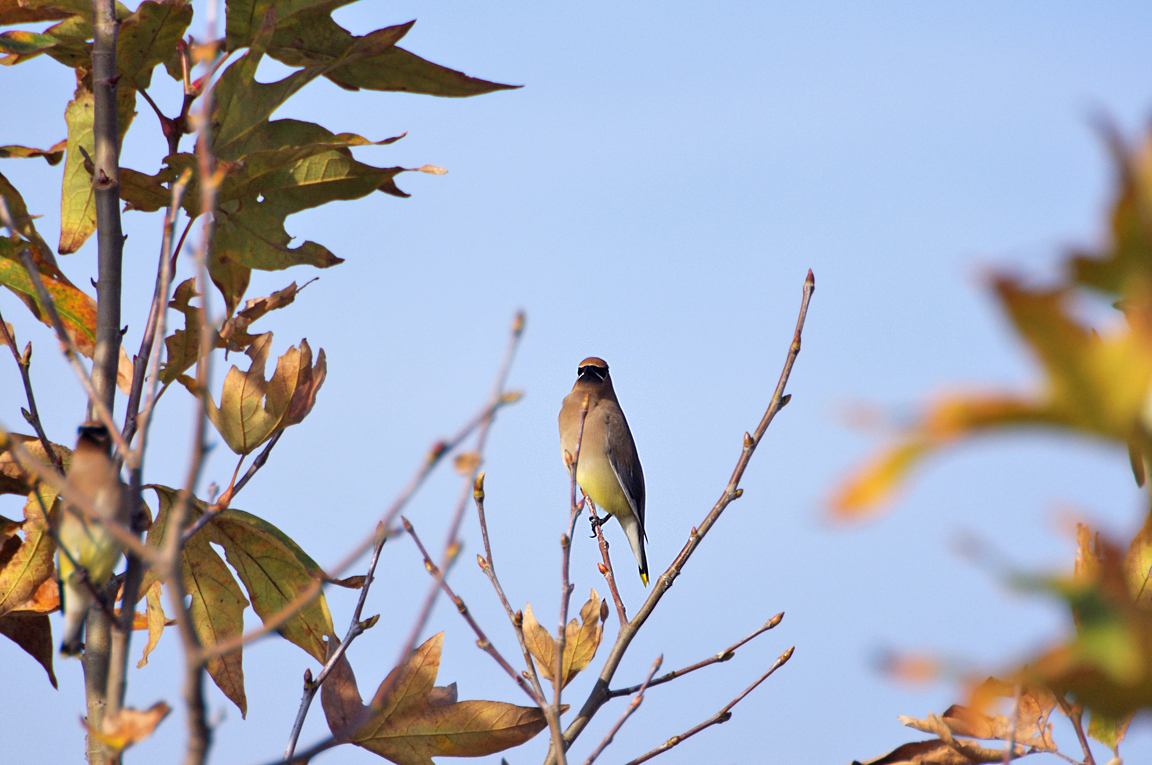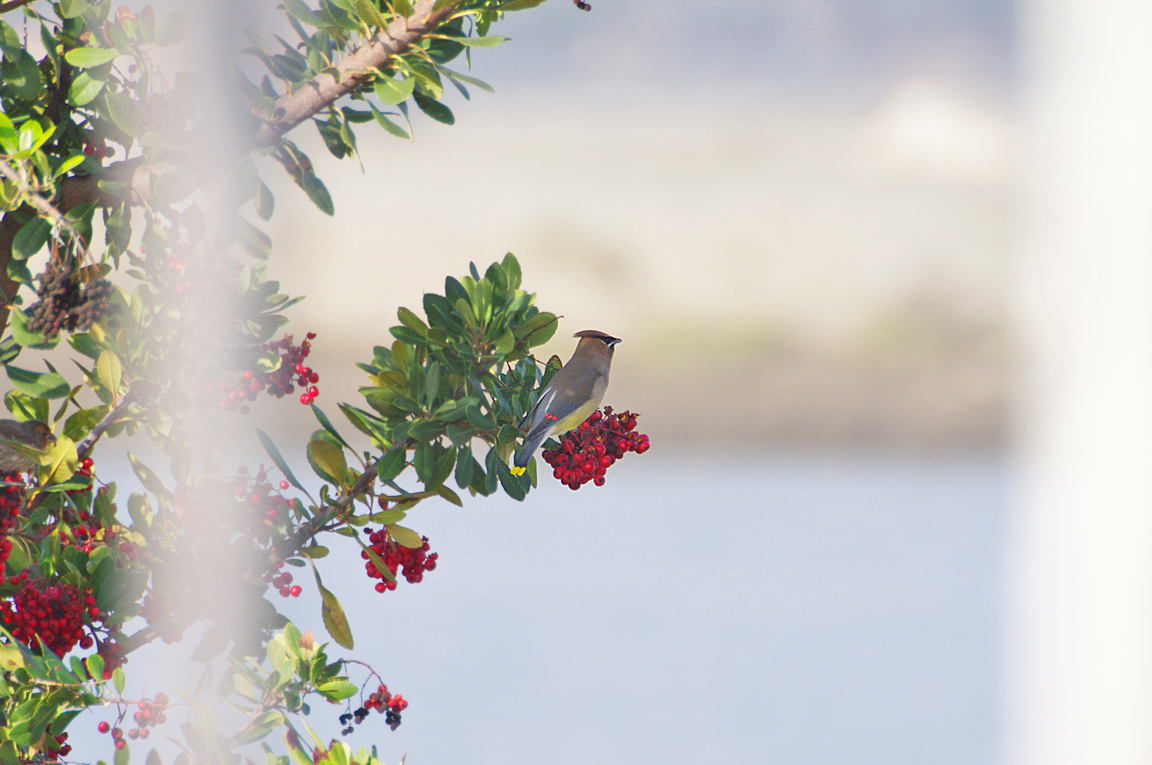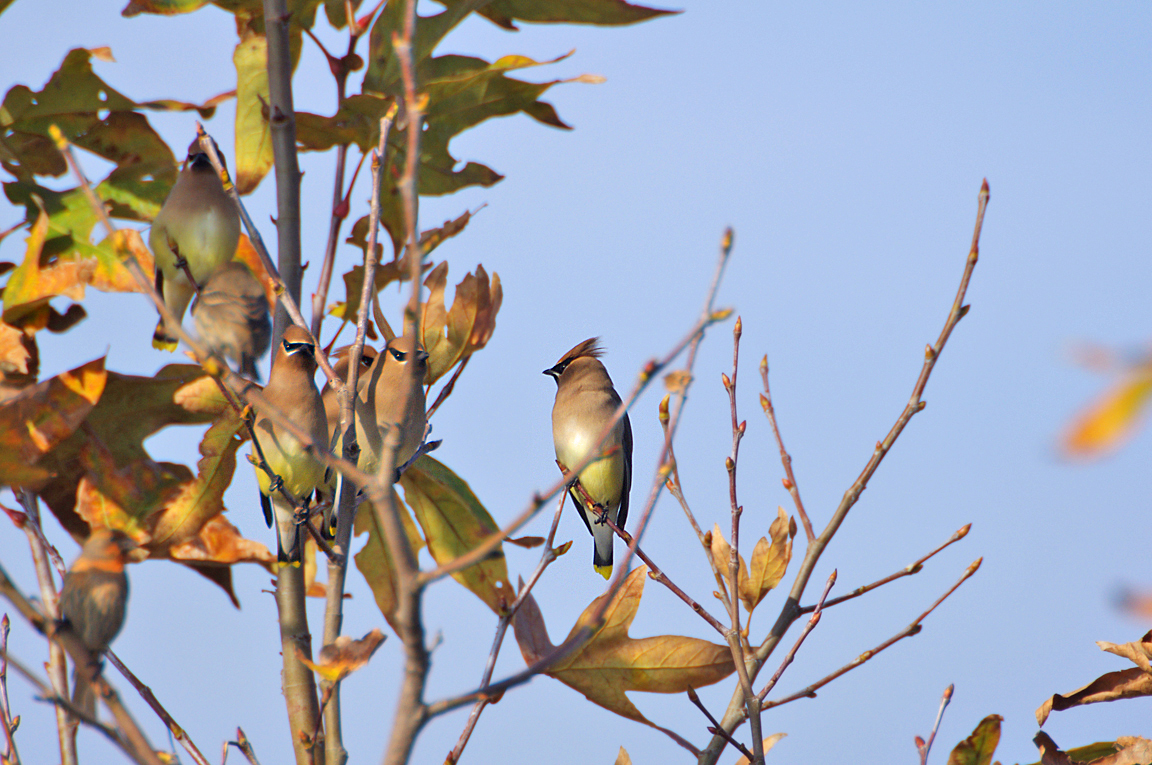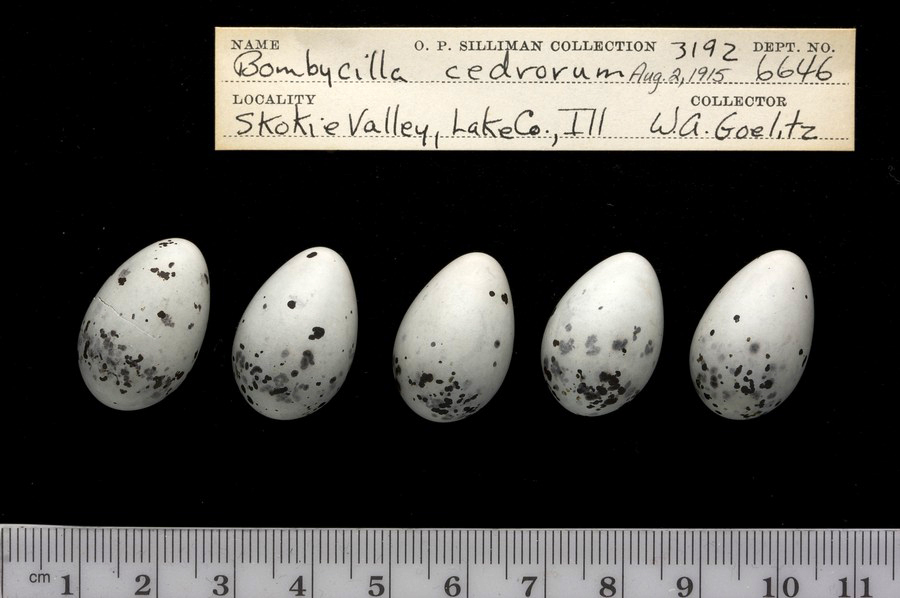|
|
|
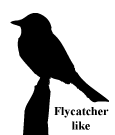 |
Cedar Waxwing
|
| Bombycilla cedrorum | |
The Cedar Waxwing is one of the most frugivorous birds in North America. Many aspects of its life, from its nomadic habits to its late breeding season, may be traced to its dependence upon fruit.
Interesting Information
-
The name "waxwing" comes from the waxy red appendages found in variable numbers on the tips of the secondaries of some birds. The exact function of these tips is not known, but they may serve a signaling function in mate selection.
-
Cedar Waxwings with orange instead of yellow tail tips began appearing in the northeastern United States and southeastern Canada beginning in the 1960s. The orange color is the result of a red pigment picked up from the berries of an introduced species of honeysuckle. If a waxwing eats the berries while it is growing a tail feather, the tip of the feather will be orange.
-
The Cedar Waxwing is one of the few temperate dwelling birds that specializes in eating fruit. It can survive on fruit alone for several months. Unlike many birds that regurgitate seeds from fruit they eat, the Cedar Waxwing defecates fruit seeds.
-
The Cedar Waxwing is vulnerable to alcohol intoxication and death after eating fermented fruit.
Description
Adult Description
-
Size: 14-17 cm (6-7 in)
-
Wingspan: 22-30 cm (9-12 in)
-
Weight: 32 g (1.13 ounces)
-
Medium-sized songbird.
-
Gray-brown overall.
-
Crest on top of head.
-
Black mask edged in white.
-
Yellow tip to tail; may be orange.
-
Small bill.
-
Yellow belly.
-
White under tail.
-
Black chin patch.
-
May have red wax droplets on tips of secondaries.
-
Small legs and feet.
Sex Differences
Sexes Similar
Male
Chin patch on male more extensive and darker than on female.
Immature
Juvenile similar to adult, but grayer overall, with broad streaking on underparts, no black on throat or behind eye.
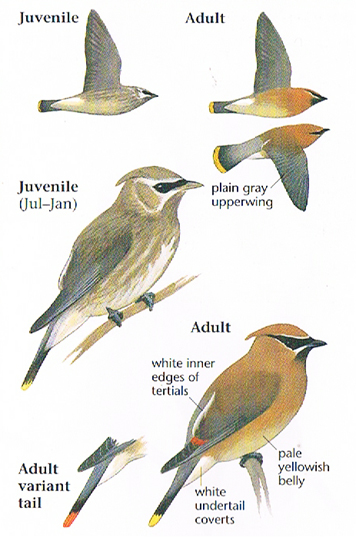
Photo taken from: The Sibley Field Guide by David Allen Sibley
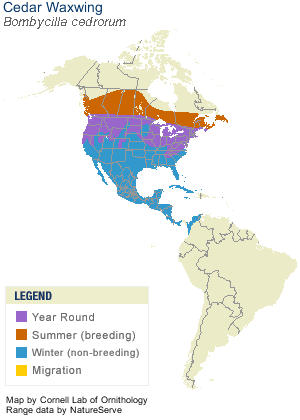
© 2003 Cornell Lab of Ornithology
|
Habitat |
|
|
Behavior |
|
Flycatches for flying insects; gleans insects from vegetation. Plucks fruit while perched, or may hover briefly to snatch fruit. Swallows entire fruit. |
|
Food |
|
Fleshy fruit and insects. |
Taxonomy
| Kingdom: | Animalia |
| Phylum: | Chordata |
| Subphylum: | Vertebrata |
| Class: | Aves |
| Order: | Passeriformes |
| Family: | Bombycillidae |
| Genus: | Bombycilla |
| Species: | Bombycilla cedrorum |
Similar Species |
|
|
Bird Sound |
|
Calls are very high pitched "bzeee" notes. |
|
Eggs look like this |
|
Photo taken from: ARCTOS Collaborative Collection Management Solution |
